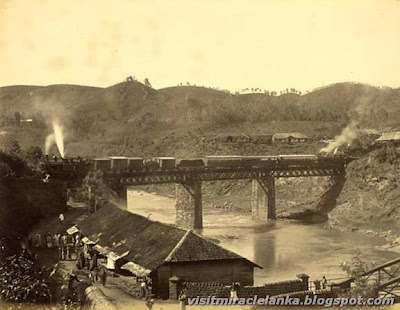Ussangoda is a place of natural beauty and a designated archaeological site and 21st National Park in Sri Lanka, situated on the Colombo - Kataragama road near Ambalantota Nonagama Junction in Hambantota District of Sri Lanka. It is also a nature reserve and is located in the southern turtle breeding zones. Ussangoda is a patch of high ground by the sea and spreads over a significant area. But unlike the reset of the land surrounding, it is only covered with grasses and a few smalls pockets of pigmy forests. The summit of Ussangoda area pans like a plateau for a significant length.
Ussangoda
is a legendary landing place of Ravana, the evil king of Hindu mythology who
piloted his special peacock chariot across the skies. The area’s landscape is
unusual, and its red earth is barren – possibly the result of a meteor that
struck in ancient times.
Place provides a panoramic view of the beach and the sea.
The extent of this place is approximately 20 acres and very little grows on the
barren red earth. Scrub jungle surrounds Ussangoda from the land side and on the
sea side the plateau drops a sheer 60 feet over a rocky escarpment out to the
open sea below. In ancient times this area was struck by a meteorite and the
barren and unusual landscape stills bares witness to this catastrophic event.




The best time of day to visit Ussangoda is close to sunset when the
setting sun illuminates the earth in brilliant hues of red and orange.
Birds are active at this time giving nature lovers an opportunity to
spot many dry zone species, while black napped hares make cameo
appearances on the plains before darting off into the nearby scrub. The
eroded cliff faces reflect the evening light in shades of pink and red
that provides a dramatic backdrop against the blue of the Indian Ocean.
Near the water's edge, the strong waves have eroded away parts of the
cliff, creating interesting rock formations. Isolated rocks stand out
like sentinels, casting shadows across the beach while standing tall to
face the constant pounding of the incessant waves. Standing atop the
cliff you can look out across the vast Indian Ocean towards Antarctica,
the next landmass due south. Or else take a look down below. You may
see a few turtles swimming near the reef.
Geological and Archaeological Importance
Ussangoda is note for unusual placement by soil structure, flora,
location. There are many folk stories related to this site which
include different takes about the land. General belief is that it is a
part of a meteor or a proximity to a meteor hit ground zero. The main
rationale for this belief is the soils brick-like hard quality with a
reddish colour which is unique to this patch of land. Some rocks and
soil layers contain what some speculate to be remnants of an extreme
heat (caused by an event such as a meteor hit). It is also suspected
that the soil has a high concentration of minerals/metals giving its
unique colour. In several places, especially by the sea facing areas
rocks and soil can be observed clearly having multiple layers usually
with distinct colourization. It is however unclear whether these
speculations have been tested in any proper scientific study at all. It
can be also noticed that Ussangoda is located geographically closer to
another archaeological site "Miniha Gal Kanda", where evidence for
pre-historic human existence has been found.
The rock debris has high iron concentration. Magnets attract them. Need further testings to confirm.
Mythology
There are several mythologies related to the area. The site is
considered a sacred / forbidden ground for general affairs in local
lore. One popular mythological belief is that Ussangoda is a ground of
the local demi-god "Mangara". Other beliefs range from religiously
rooted backgrounds to the unwritten/alternate history related to
Ravana. The validity of these beliefs remain largely untested to date.
View Larger Map
Source -
Click here












































































